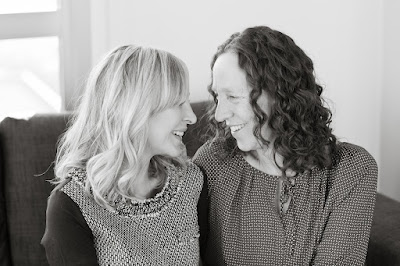Are You Breathing, Honey?
My Mama Ruth used to ask me this question a lot and honestly, it annoyed me. It annoyed me because of course she was right, I wasn’t breathing, but also because it meant that I had to deal with my shit. Sometimes I just wanted to hide out in my non-breathing state so that I could numb myself to whatever unpleasant situation happened to be occurring for me in that moment. I mean this literally. Go ahead and hold your breath and you’ll see what I mean. Holding your breath numbs you both physically and emotionally, but you can’t continue to hold your breath forever. Eventually you will have to breathe, and when you do, you will find yourself right back in your body. And when you arrive back in your body your feelings will still be there, because here’s the truth about the things we don’t want to look at: they tend to stick around. They hang out, waiting for you to acknowledge them, and they have a lot of patience. They will wait for you to do your whole avoidance thing—they don’t mind. In fact, your avoidance is like superfood for unacknowledged feelings; it makes them grow bigger and stronger, sometimes entirely unrecognizable in their new form. In this super state, our feelings can act out in ways that keep us further from our truths, further from the life we envision for ourselves, and further from the vibrant health we all deserve.
Breath-focused meditation allows you to become more aware of your breath, and as you begin to work with it consciously, you create a direct link to a part of yourself that usually functions outside of conscious awareness. Taking time to observe your breath can be immensely helpful in managing your emotions and nonjudgmentally addressing your painful experiences. Ideally, we are present enough to our feelings to actually work through them in real time, as they are happening. Doing this keeps everything in perspective. Of course, ideal doesn’t always happen, so we start where we are and we breathe.
Breathing into You
Begin to pay attention to your breath, watching your inhales and exhales as they come and go. Allow yourself to become curious about the depth and pace of your breathing. What would it feel like to lengthen your inhales and exhales? What if you paused at the top of your inhale for just a second or two, and again at the bottom of your exhale? Allow your face, neck, shoulders, and back to be easy. Allow your hips, legs, and feet to be easy as well. If you feel discomfort in any area of your body, dedicate the next inhale and exhale to it.
Long, Deep Breathing
Next time you find yourself holding your breath or needing to plant yourself back into that lovely body of yours, you would be wise to follow Mama Ruth’s advice and breathe, honey! Let’s practice it now so that you are more likely to remember it when you really need it. This seemingly simple breath is an amazing method for moving energy and is the basic breath used in Kundalini yoga. Long Deep Breathing uses the full capacity of the lungs—something most of us rarely (if ever) do. It starts by filling the abdomen, then expanding the chest, and finally lifting the upper ribs and clavicle. The exhale is in the reverse: the collarbone deflates, then the chest, and finally the abdomen pulls in and up, as the navel pulls back toward the spine. Each part of the breath expansion is distinct, and when all three are combined you have a complete Long Deep Breath.
I find it helpful to learn this breath in three parts, because it gives you an opportunity to really notice where your breath is in your body. To begin, you can sit either on the floor or in a chair. If you are on the floor, grab a pillow or blanket if that’s comfy for you. Sit up straight and place your left hand on your belly, your right hand on your chest. Okay, let’s breathe!
Part I: Abdominal Breath
- Bring your attention to your navel and take a slow, deep breath by letting the belly relax and expand.
- As you exhale, gently pull the navel in and up toward the spine. This pushing allows a portion of the lower lungs to be used efficiently.
- Keep your chest relaxed and focus on breathing entirely with the lower abdomen. On your inhale, notice the expansion of your belly and monitor the chest with your other hand—it should remain still and relaxed.
Part II: Chest Breath
- Using the chest muscles, inhale slowly, focusing on the sensation of expansion and keeping the diaphragm still. Exhale completely, but do not use the abdomen.
- Continue on for a few more rounds, comparing the depth and volume of this breath with the isolated abdominal breath. This breath is where many of us hang out all day, and it means that we aren’t using the full capacity of our lungs.
Part III: Clavicular Breath
- Sit up straight and contract the navel in, keeping the abdomen tight. Lift the chest without inhaling. Now, inhale slowly by expanding the shoulders and collarbone. Really try to feel as if you are breathing in through your collarbone.
- If this one feels difficult for you, that’s actually a good sign! If this is your normal breath, you are depriving yourself of life-giving oxygen. If you’ve ever watched a baby breathe, you will notice that it’s naturally performing a long, deep breath. This means that you do already know how to breathe, you just forgot somewhere along your life … it happens.
Putting It All Together: Long Deep Breath
- Begin the inhale with an Abdominal Breath. Then add the Chest Breath and finish with a Clavical Breath. All three breaths are done in a smooth motion.
- Start the exhale by relaxing the clavicle, then slowly emptying the chest, and finally pull in the abdomen to force out any remaining air.
- Feels amazing, right? Keep breathing for another few Long Deep Breaths.


Comments
Post a Comment